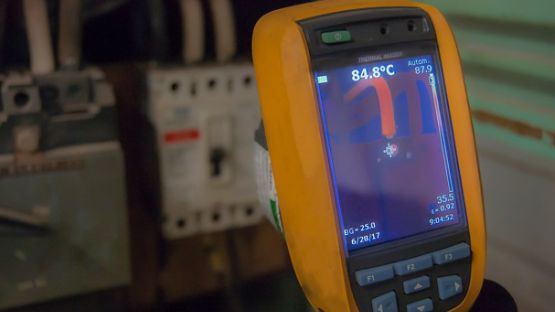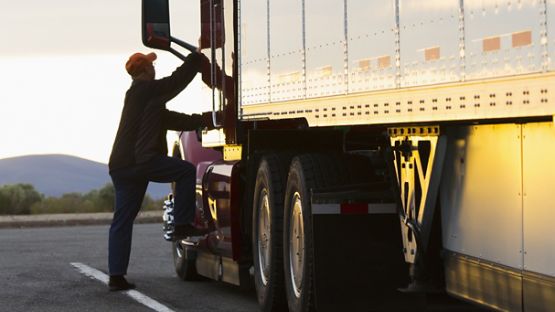Fleet managers beware: cargo thefts are on the rise.
Supply chain disruptions, product scarcity and inflation are all factors that have led to increased demand on the black market, which has made cargo theft all too common.
CargoNet’s 2022 data indicates that:
- Events that involved theft of at least one heavy commercial vehicle such as a semi-truck or semi-trailer increased by 17% from 2021
- Events that involved cargo theft increased by 20% year-over-year
- The average value of cargo stolen in a single event was nearly $215,000
- About $223 million in cargo was stolen across all cargo theft events in 2022
The Insurance Bureau of Canada estimates that cargo thefts like these cost the Canadian economy $5 billion every year. Food, electronics, equipment and metals are hot commodities right now due to the rising prices of consumer goods. And it’s very difficult to recover stolen property and prosecute thieves.
For all these reasons, it’s critical to have a prevention plan in place to deter cargo theft in your yard and throughout your cargo processes. Although some Canadian jurisdictions have dedicated crime prevention departments for commercial vehicles, they are typically under-resourced and under-staffed. The onus is on trucking companies to protect themselves and prevent cargo theft.
Tips for preventing cargo theft
There are many measures organizations can take to protect their fleet — in the yard and on the road.
1. Avoid using public load boards with your fleet
It’s common for fleet owners, carriers and owner operators to use online load boards to match freights with carriers. But there is real risk with every business transaction. CargoNet recorded 96 more fictitious pickups in 2022 compared to the year prior, a 600% increase.
Public load boards are often not maintained in real time, making it easy for fraudsters to take advantage and create phantom loads that end up costing trucking companies thousands per load.
2. Partner with reputable load brokers only
Be sure to connect with competent load professionals with multiple safeguards in place. These brokers check waybills, ID and have more than one person on site to verify shippers and carriers. Security processes like these ensure that the right trucker is picking up the right load.
3. Examine cargo security protocols in your yard
Every fleet yard should have:
- Lights that illuminate every corner
- Fencing around the entire perimeter with an alarm that is activated when breached
- CCTV with signs that indicate monitoring is 24/7 (tapes should be kept for a minimum of one month)
- Motion detectors systems that are activated in the off-hours
- Exits/entries controlled by a security kiosk/gate with an employee present
4. Audit security protocols regularly
Security is not a one-and-done activity. Preventing cargo theft requires constant upkeep and checks. It’s helpful to audit your procedures and do weekly checks, i.e. verifying no breaches or damage to fencing. Consider that thieves are watchful and will note if loaded trailers sit in a yard for days without being checked or whether security guards check for bond seals. You may also want to consult a security professional to analyze possible gaps with your risk management policy.
All employees should sign off on daily checklists to ensure procedures are being followed. And drivers should be instructed to turn off vehicles and lock them when they make stops on the road. They should also be equipped with a, “What do I do in the event of an emergency?” checklist.
5. Be open to improvement
Are you using outdated technology to protect your premises? It’s important to regularly assess the technology and practices you’re using, where they’re placed and whether newer models and fresh ideas may improve surveillance. For example:
- Do you have site-specific threats, such as proximity to a highway, ease of access? How do you mitigate this cargo theft risk?
- Do you have simple signage and warnings posted?
- Are your camera systems in high definition?
- Are cameras placed in the right areas – and where they can’t be manipulated?
- Would it be more effective to hide some cameras from plain sight?
- Do you need to add more cameras?
- How are you storing CCTV footage? Is it the most secure and efficient database or software?
- Do you need a safety and compliance employee working on-site?
- What are your security risks today – how have they changed since yesterday and how might they change tomorrow?
6. Protect cargo on the go
GPS tracking systems for equipment that can automatically generate a location of the trailer or tractor can help keep your cargo safe. Boomerang systems, TAG/Nano technology and other sophisticated theft deterrents are widely available and can be specifically tailored to your needs.
Drivers should be advised to verify all bills of lading, unit numbers, carrier information, contacts and any other relevant information with every load. Many crime syndicates have sophisticated networks to compromise and intercept these vulnerable loads.
And drivers should be instructed to turn off vehicles and lock them when they make stops on the road. Drivers should also be equipped with a, “What do I do in the event of an emergency?” checklist.
7. Keep daily security audits and entry of carriers or personnel
Many organized crime syndicates target fleet employees with the promise of personal gain and wealth. It’s important to hire the right people for the right job. Look for competent security professionals with expertise in the specific cargo and tools you need to protect. Perform regular security checks on your staff to ensure there are no breaches from within.
8. Enhance security management during peak hours
Peak hour operations and load deliveries should have further security protocols in place, such as added security or specific staging areas for the product being monitored. Ensure mobile patrols with staff who keep detailed logs and movements through their shifts in a journal. To stay safe, cargo should not be left unattended.
9. Use theft deterrent devices on trucks
There are plenty of tools you can use to help protect your drivers, fleets and cargo. These include:
- King pin locks in the fifth wheel pin, making it difficult for a tractor unit to couple to the pin. These locks are usually very strong and need to be cut off with machinery or unlocked by a stolen key.
- Remote engine cut off devices shut down an engine automatically from an outside source.
- Trailer air supply locks can be used to cut off air supply to release trailer brakes.
- Dock locking systems, trailer telemetry, geo-fencing and driver wheel locks are also helpful for high-value loads to deter movement of the unit.
Tools like these should always be installed by a mechanic in a way that make them tough to find.
Want more information on cargo theft mitigation?
As cargo thefts continue to increase, it’s critical for fleet owners to fortify their safety and theft prevention programs. If you would like more information and personalized support, reach out to an Aviva Risk Management Solutions specialist. We would be happy to help you mitigate risk and avoid cargo theft.
Sources:
Insurance Bureau of Canada – Cargo theft
Ontario Trucking Association – Cargo thefts jump in 2022













